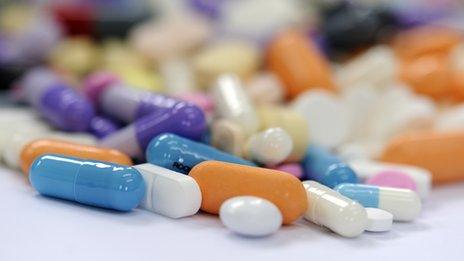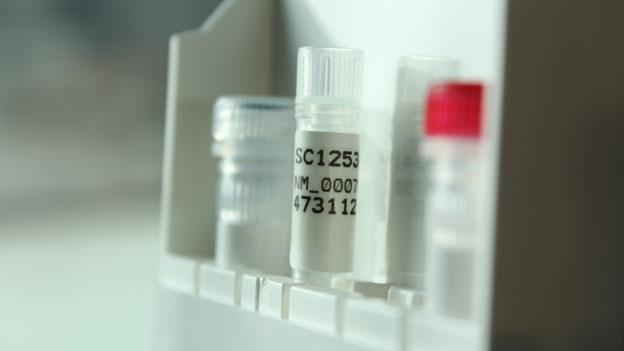New sports doping test '1,000 times more sensitive'
- Published

A knowledge of the limits of testing has helped many athletes avoid sanctions for doping
US researchers have developed a new way to detect performance-enhancing drugs that they say is 1,000 times more sensitive than current tests.
In the laboratory, the new screen detected stimulants and steroids in minute concentrations.
The method is inexpensive and works with existing equipment, the scientists claim.
If validated, the test would significantly extend the time in which cheating athletes could be caught.
The research has been presented at a meeting of the American Chemical Society, external (ACS).
Most testing for doping products uses a long-established technique called mass spectrometry.
This involves zapping urine samples with a beam of electrons that turns the atoms into charged particles.
These particles then travel through the spectrometer where they are weighed by a magnetic field.
As the scientists already know the weight of many steroids, for example, they are able to rapidly and accurately detect doping. But there are difficulties with this system.
Some byproducts of doping substances are so small and have a negative electrical charge that they may not produce a strong enough signal for detection.
Now chemists at the University of Texas in Arlington believe they have developed a method that builds on existing mass spectrometry techniques to detect these extremely small metabolites.

Doping has long been the scourge of some sports, including professional cycling
Called Paired Ion Electrospray Ionisation (PIESI), the system uses a chemical agent to bind to the minute pieces of steroid or amphetamine and make them more visible to the detector.
"It makes them much more detectable," Dr Daniel Armstrong, who led the research team, told BBC News.
"We're talking about parts per trillion, sub-parts per trillion - and the amazing thing is that it is so simple."
In laboratory tests, the system was able to detect steroids, stimulants, alcohol and depressants.
"We listed our sensitivity versus everything we found in the literature thus far, and that's where we got this 10-1,000 times more sensitive than anything else recorded, depending on the drug you are talking about," said Dr Armstrong.
As the key binding agent is commercially available, it should be relatively inexpensive to adapt existing detection methods, the researcher said. A variation of the method is already being used to detect minute amounts of industrial contaminants.
Open window
The new detection method would radically alter the detection window in which an athlete could be caught after taking these drugs.
This is a critical issue in the fight against doping. A detailed knowledge of the length of time a substance is detectable has been used by many cheating athletes and their scientific advisers to avoid being caught.
"With steroids, it's about two orders of magnitude, about 100 times more sensitive. We may be able to detect a steroid or something that's long-lived a couple of years after it was taken," said Dr Armstrong.
The new method wouldn't work for blood doping, nor would it detect human growth hormone, said the researchers.
The scientists will be submitting their work for peer review after the American Chemical Society meeting in Dallas.
While they have had many enquiries from reporters, so far they've had none from the World Anti-Doping Agency (WADA), the US anti-doping agency (USADA), or the International Olympic Committee (IOC).
Follow Matt on Twitter @mattmcgrathbbc, external.
- Published15 January 2014

- Published12 January 2014

- Published4 January 2014
